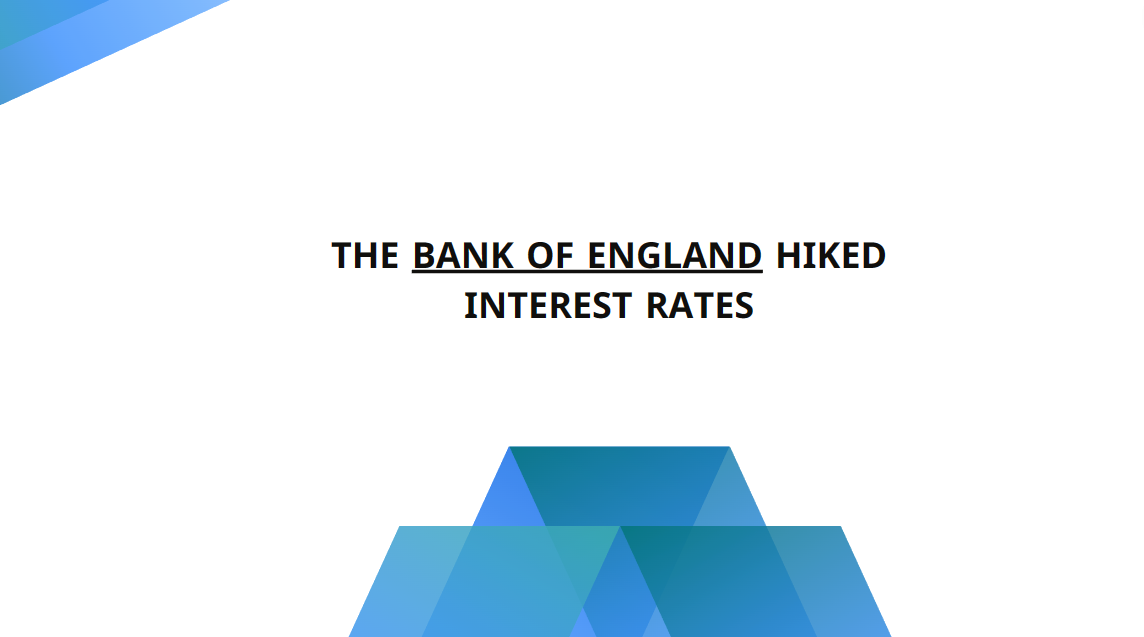Financial stability risks from the non-bank sector: thinking system wide
In recent years, a number of vulnerabilities in the system of market-based finance have crystallised, both globally and in the UK. Lee Foulger sets out the importance of the international work programme to enhance financial firms’ resilience. He then explains the importance of macroprudential regulators taking a ‘system-wide’ perspective to addressing risks to financial stability as well as the Bank of England’s plans to do so, via its system-wide exploratory scenario exercise.
Speech
As macroprudential policymakers, with the primary objective of pursuing financial stability, we aim to identify and monitor the key risks to that objective and aim to take actions in advance of those risks crystallising to reduce their potential impact.
The Financial Policy Committee (FPC), the UK’s macroprudential authority, and macroprudential authorities around the world have now been in place for around a decade following the financial crisis, and given the increase in bank regulation required in the aftermath of the crisis, it is no surprise that over that time we have seen a relative shift towards non-bank finance, which in turn has led to the significant expansion of the landscape of systemic risk we have to look across to meet our objectives.
Vulnerabilities in the non-bank world can contribute to market dysfunction which can have implications for financing of the real economy, and those vulnerabilities can also transmit risk back to banks and other parts of the core of the financial system.
This has not just been a hypothetical exercise of looking to what might happen. We have seen these vulnerabilities crystallise a number of times in recent years:
- Prior to the pandemic, there had been evidence that markets were becoming more prone to liquidity shocks – the volatility in US overnight repo rates in September 2019 one such example, with the Federal Reserve taking action to restore market stability.
- With the onset of the pandemic in March 2020, initial ‘flight to safety’ behaviours shifted abruptly into ‘dash for cash’ dynamics, that played out across the international financial system. This disrupted market functioning and threatened to harm the wider global economy. Significant policy action from central banks was taken in response.
- In March 2021, the failure of highly-leveraged family office Archegos led to substantial losses for some banks. Archegos’ positions in equity derivatives were financed by banks; when Archegos could not pay margin calls as a result of price falls in the underlying stock prices, banks sought to limit their own exposures by exiting positions, further precipitating falls in the prices of those stocks and leading to significant losses for some.
- In early 2022, volatility in commodities markets intensified with the Russian invasion of Ukraine. Margin requirements increased and banks faced significant calls on revolving credit facilities, in part to fund these margin requirements. Across Europe, authorities stepped in to protect the risk of temporary liquidity strains becoming solvency risks.
- In late 2022, UK financial assets saw severe repricing, particularly affecting long-dated UK government debt. The rapid and unprecedented increase in yields exposed vulnerabilities associated with liability-driven investment (LDI) funds in which many defined benefit pension schemes invest. This led to a self-reinforcing spiral of collateral calls and forced gilt sales with no clear end in sight – motivating a temporary and targeted intervention by the Bank to restore stability.
In many of these examples, authorities intervened, and the real economy was largely shielded from lasting impacts of financial sector amplification of the sort that we saw following the financial crisis. But the fact that policymaker interventions were necessary to prevent financial instability and disruption to the provision of credit to the real economy demonstrates the need for increased levels of resilience across the non-bank sector.
In determining the level of resilience required, as well as to identify other or new risks, we also need to take a system-wide perspective as macroprudential regulators. Firms will naturally have a more limited perspective, focused on the part of the system they engage in. As macroprudential regulators we need to understand what the activity of firms means for the wider markets they operate in, for the wider financial system, and ultimately for financial stability.
Building individual resilience – self insurance
Many of the non-bank vulnerabilities we have seen crystallise over the past few years –leverage, liquidity mismatches and interconnectivity with other parts of the financial system – can be managed successfully. But if improperly managed, they can threaten to create spillovers that ultimately matter to the real economy.
And so the first step is to ensure market participants have appropriate levels of resilience to the risks they are facing – their own ‘self-insurance’. This is inherently a cross-border issue. The regulatory landscape in which non-bank financial institutions – or “NBFIs”– operate is global, complex both within and across jurisdictions, and fragmented. So, the Financial Stability Board (FSB), together with standard setting bodies, has been leading international efforts to raise resilience in the sector.
This has focused on areas including money market and open-ended funds, and margining practices. During the “dash for cash” we saw severe outflows from money market funds (MMFs), and to a lesser extent from other open-ended funds. Liquidity mismatch and inadequate tools to deal with redemption pressure, contributed to sharp outflows. Many open ended funds responded by selling large amounts of assets, impacting underlying market liquidity. The potential for suspensions in MMFs would have meant that investors wouldn’t be able to access their cash holdings, leading to further contagion.
There has been much work to address these vulnerabilities. In 2021, the FSB published its MMF policy proposals which now requires action by jurisdictions to implement the proposals at domestic level. The FSB, together with the International Organisation of Securities Commissions (IOSCO), has assessed the effectiveness of existing FSB and IOSCO recommendations and will soon propose revisions to these. To address the vulnerabilities in margining practices the Standard Setting Bodies of the Basel Committee on Banking Supervision (BCBS), the Committee on Payments and Market Infrastructure (CPMI) and IOSCO have analysed underlying drivers and are working on their proposals.
It will be crucial that individual jurisdictions take forward and implement reforms agreed internationally. While the solutions are global, making a reality of them will necessarily be local.
One of the ‘not new’ risks that requires further work are the vulnerabilities arising from leverage in the NBFI sector. Leverage is an integral part of the economy and allows households to borrow to buy houses, companies to invest in projects or financial markets to facilitate trading and remove price discrepancies. But if poorly managed it can also expose non-banks to greater losses and sudden demand for liquidity. Where these are significant it can give rise to financial stability risks.
Systemic risk from leverage in the non-bank system can arise through two channels.footnote[1]
The first is via markets that matter to the real economy. Excessive or poorly managed leverage can lead to large and forced asset sales that impact underlying market liquidity. We saw this in the ‘dash for cash’. Hedge funds experienced large margin calls on their future short positions. In response, to meet margin calls and rebuild buffers, hedge funds had to unwind large positions in basis trades leading to a short period of severe illiquidity in US Treasury markets.
The second is via counterparties that matter to the real economy. Leverage increases the risk of default which can come with losses to their counterparties. We saw this in the case of Archegos where individual counterparties were not sighted on the total size of the firm’s leveraged positions, and experienced large losses on the value of their collateral. Disruption can be further amplified by related factors such as the amount and concentration of leverage and market participants’ risk management practices.
My colleague and FPC member Jon Hall, in his speech ‘With leverage comes responsibility’ sets out today further thoughts on the dynamic nature of leverage and the tension between deleveraging behaviour and financial stability.footnote[2]
From our perspective, it will be important for international work to address a number of issues.
Firstly, data and monitoring: Authorities need better tools and risk measures to identify and monitor the build-up of leveraged positions both for financial and synthetic leverage across the system. Our work on system-wide stress scenarios, which I will discuss in a second, can help with this.
Secondly, strengthened risk management in the providers of leverage such as prime brokers: What we could see in the case of Archegos is that prime brokers didn’t have sufficient visibility into the aggregated leveraged positions of the firm. Greater transparency and ability for prime brokers’ to make more informed judgements about exposures to a leveraged counterparties, alongside stronger risk management practices, might be able to help.
Thirdly, greater self-insurance and a more system-wide approach: Authorities need to consider whether there are policy tools that can respond to the build-up of leverage and mitigate systemic risks. Which tools or combination of tools work best will require further work, and may depend on jurisdictional circumstances and specific market structures. In the UK, the FPC has used its Recommendation powers to raise the resilience of LDI funds to sharp moves in yields.
The Bank will continue to contribute actively to this important international work.
While self-insurance is necessary to raise the resilience of the system against shocks and reduce the likelihood and scale of public sector intervention, it is not sufficient. Macroprudential authorities need to have more effective oversight across the system, and to consider the overall resilience of the system as whole.
Improving system-wide resilience
Better understanding of system-wide resilience can complement greater self-insurance. This is because the individual resilience and behaviours of firms alone cannot ensure that their collective actions in stress do not lead to outcomes which pose risks to financial stability. Nor can it ensure that the markets they come together in do not tend to dysfunction, rather than orderly repricing, in stress. And nor can it ensure that, through interconnections – where liquidity flows to and where it doesn’t – these impacts do not cascade to other markets or sectors.
Understanding how core financial markets are likely to come under strain relies on understanding the behaviour of the financial firms who transact in them under stress. A market in which only a limited number of firms or investors are willing to participate might be prone to concentration risk. New incentives, constraints, preferences and risk appetites become relevant when financial conditions are deteriorating and uncertainty is rising. In times of stress investors might step away and only take one side of a transaction, leading to sharper responses in price moves.
The rational behaviour of financial firms under such conditions, including actions that may form part of sensible approaches to risk management for the firms in isolation, can combine in ways that lead to adverse outcomes for financial markets, and so potentially financial stability. For example, the ability of hedge funds and other liquidity providers to respond to price dislocations in a stress could affect the degree to which selling overwhelms buying in a specific segment of a market.
Funds’ mandates, when interacting with credit downgrades, can spark further asset sales to return to compliance. Banks’ willingness to utilise their balance sheet to provide financing can affect firms relying on them.
Interconnections mean these impacts can cascade to other markets or sectors. Direct relationships between financial firms may entail investments in one another’s securities, bilateral trading, or the provision of finance, for example. They will also have indirect relationships via financial markets – where the behaviours of some affects prices and conditions for all. For example, when a liability-driven investment fund withdraws cash from money market funds in order to meet margin calls that become due, that money market fund might seek to reduce lending in the repo market. Seeking to understand these interconnections is even more important when considering risks that affect the system as a whole and not just a corner of it.
The role of firms within market-based finance and interconnections between them can also change through time. In parallel to increases in the size of the non-bank financial sector since the global financial crisis, which now accounts for around half of global financial system assets, have been changes in composition and activity. For example, Principal Trading Firms have become increasingly important liquidity providers in core financial markets, particularly in the US.footnote[3]
Building system-wide understanding in practice: The SWES
This is why at the Bank of England we announced that we will conducting a system-wide exploratory scenario (SWES) exercise involving non-banks as well as banks to help us to map out these risks. And I am delighted to confirm that we have now launched this exercise.footnote[4]
Consistent with the lessons learned of the last few years, this exercise will focus on exploring and analysing the resilience of a subset of financial markets we consider core to UK financial stability.
This exercise has two objectives:
- to enhance understanding of the risks to and from NBFIs, and the behaviour of NBFIs and banks in stress, including what drives that behaviour; and
- to investigate how these behaviours and market dynamics can amplify shocks in markets and potentially bring about risks to UK financial stability.
This is a major, novel exercise. But, we think, also an important piece of work to take forward to support UK financial stability, which the International Monetary Fund has assessed is a global public good.footnote[5]
Against the backdrop of such an ambitious exercise, we've taken deliberate decisions to make it tractable and focused. Two aspects in particular warrant mention.
First, we intend for our scenario to encapsulate a severe but plausible shock to global financial markets, driving liquidity redistribution across the system. But we will focus our investigations into the consequences for a number of core UK financial markets. Specifically, gilts, gilt repo, sterling corporate bonds and a number of associated derivative markets. We cannot do it all, so we are choosing to focus on what we think really matters to UK financial stability, as borne out by recent instances of market stress.
Second, more than 40 participating firms are being drawn from a wide cross-section of the financial system, aiming to reflect both activity and diversity in those markets. This includes banks, hedge funds, asset managers, pension funds, insurers and central counterparties. But we are narrowing our focus to market resilience and UK financial stability – we’re specifically not investigating the resilience of the firms themselves. This is not a pass/fail stress test. This reflects our macroprudential and system-wide focus – and our desire to better understand market resilience rather than individual firm resilience. Combining firms’ responses and market dynamics will aid us in better understanding where pressures might arise and so amplify shocks across the system as a whole.
An exercise of this type – spanning the financial system and drawing in the contributions of so many firms – has never been done before. We’re working closely with the Financial Conduct Authority, The Pensions Regulator, and other regulators to deliver this important exercise.
And we recognise that to do this successfully requires a good dose of realism. We don't come to this expecting to reach all the answers. We're taking an especially collaborative approach to this exploratory scenario exercise – with the participating firms, as well as with external communities and experts. The most obvious way this is embodied in the design of our exercise is that we are running it in two phases: the “information gathering phase” that will start by bringing important information in house that will help us run a successful scenario-led investigation. We will launch the “scenario phase” in Q4 this year.
As already made clear, its fundamental benefit is that it will increase our understanding of vulnerabilities in market-based finance, by better assessing market resilience and better understanding the interconnections between banks and non-banks within this landscape. It will help us to assess the materiality of macroprudential risks that we face. We expect that our findings will support industry risk management – for example, potentially by highlighting areas where firms have expectations that are not likely to be borne out given the intended behaviours of others. And it will provide a complement to existing stress tests, where firms and sectors are stressed individually.
The majority of the findings from this exercise will concern vulnerabilities in market-based finance and risks to financial market resilience. We will also learn a lot about how to run these kinds of exercises, as well as developing our own in-house, desk-based capabilities to model some of these interactions. Given the global and interconnected nature of these markets and the cross-border activity of participating firms, these findings are likely to be relevant to more than just UK policymakers, and we are keen to share what we learn. While we do not anticipate full results until next year, we will aim to share interim findings along the way.
Conclusion
In much the same way stress testing has helped us better understand solvency risks to banks that were at the centre of the stress we saw in the global financial crisis, system-wide scenarios have the potential to improve our understanding of how liquidity risks – risks that have tested global financial stability a number of times in recent years – propagate through the financial system.
Exercises such as this are crucial to enhancing our understanding of vulnerabilities and our ability to respond to them. If that understanding is public knowledge, it is also a public good, helping both firms and regulators better prepare for periods of stress. For example, it’s only from knowing where liquidity mismatch potentially sits in the system, or where operational frictions might prevent liquidity flowing between participants as would be optimal, that enables us to take action to limit the effects of these vulnerabilities in stress.
System-wide tools can complement but cannot substitute greater self-insurance by market participants. In some areas, international work to build resilience is closer to policy action than others. Some jurisdictions – the UK included – are already in the process of consulting on reforms to sectors such as money market funds to give effect to the agreed international standards.
But in other areas – like leverage – we need to push ahead. The opportunity to deepen our understanding and make progress on delivering resilience in the global system of market-based finance has never been more timely nor important.
I’d like to thank Victoria Monro and Konstantin Wiemer for their assistance in drafting these remarks. I would also like to thank Sarah Breeden, Andrew Bailey, Martin Arrowsmith, Jon Hall, Danny Walker, Isabel Spirgel-Sinclair and Thomas Wise for their helpful input and comments. The views expressed here are not necessarily those of the Bank of England.
See Sarah Breeden’s recent speech on the FPC’s Recommendation for a framework for steady-state resilience within LDI funds, and how that could be applied to build resilience in non-banks more widely.
See Hall (2023).
See Hall (2021).
For more on the SWES exercise, see The Bank of England’s system-wide exploratory scenario exercise.
See the IMF’s Concluding Statement of the United Kingdom 2023 Article IV MissionOpens in a new window.























































First, please LoginComment After ~